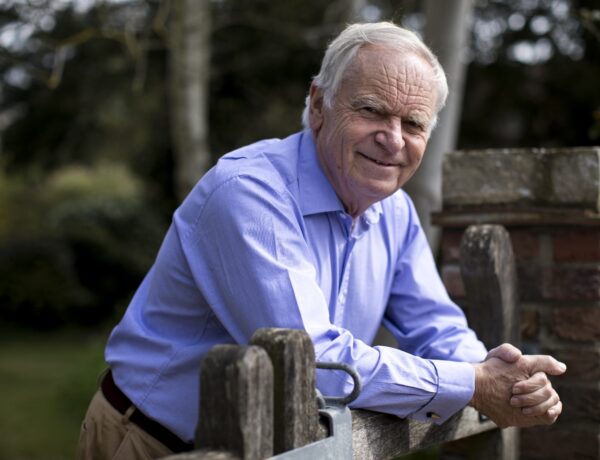Positioning himself as an “arms dealer for the creative revolution”, Todd Henry teaches leaders and organizations how to establish practices that lead to everyday brilliance.
He is the author of five books (The Accidental Creative, Die Empty, Louder Than Words, Herding Tigers, The Motivation Code, Daily Creative) which have been translated into more than a dozen languages, and he speaks and consults across dozens of industries on creativity, leadership, and passion for work.
With more than fifteen million downloads, his podcast The Accidental Creative offers weekly tips for how to stay prolific, brilliant, and healthy.
Todd’s book Die Empty was named by Amazon.com as one of the best books of 2013. His latest book, Daily Creative, offers daily sparks of inspiration and practical advice for creative pros.
Each week, we publish a new daily writing routine from a famous author. Subscribe to our newsletter so you don’t miss out!
Hi Todd, great to have you on Famous Writing Routines. We’re really excited to talk to you about your writing routine and creative process. For those who may not know, can you please tell us a little bit about yourself?
I am the author of six books, mostly about the creative process. I spend much of my time teaching and training people who have to be creative under pressure each day how to have better ideas consistently.
Can you take us through the creative process behind your 2018 book, Herding Tigers?
The book was the culmination of many years of conversation with creative leaders. I discovered that many leaders receive advice about general leadership, but that they lack an understanding of the nuances of leading talented, creative people. I wanted to write a book targeted specifically at these issues.
I tend to write my books from the inside-out, meaning that I write whichever section is especially resonant on that particular day. Perhaps I came across an idea or some research that illuminates an idea, or I just had an experience that perfectly illustrates a point. Rather than waiting until I get to that section of the book, I’ll just spend my writing time on that topic for the day. I write in Scrivener, which makes it easy to hop around within a manuscript.
So much of the non-fiction writing process is about getting to the core idea set, then refining it until it resonates. Once I have an outline, I start writing within it until the book takes form. Then, we will often cut thousands of words during the editorial process to get the book into finished form. Good editors are essential to the process, and I’ve been blessed to have some phenomenal ones.

What does a typical writing day look like for you?
I write in the morning, first thing. I find it helpful to get my daily writing out of the way before I do anything else. For me, it’s a lot like running. I don’t enjoy it, but I’m glad I did it. Writing is much the same way. I don’t love the process of writing, but I’m always glad I wrote. So, I find that getting my ideas out onto the page while my mind is still fresh sets me up for success the rest of the day. When I’m working under deadline on a manuscript – which has been pretty much all the time since 2009 – I block the first hour or two of my work day for writing.
Do you have a target word count you like to hit each day?
It’s small compared to many others. It’s 500 words, Monday through Friday. I find that making steady progress every day is very important to me, and that 500 words is a very manageable amount. I never fail to hit it. I used to do 1,000 words, but found that I hit a wall around 700 words and struggled to complete the target. Since I moved it to 500 words, I never miss and I’m much happier with the output. There’s little filler because I have to be concise to get the idea out before I run out of words.
That’s another thing; I’ll often end mid-sentence once I hit my 500 words. I believe strongly in “ending with the beginning in mind”, meaning finishing my daily work knowing exactly where I’ll pick back up the next day. When I do this, I never struggle to start.
You teach and train people how to better leverage their creativity under pressure – what sort of tricks or tips do you apply to your own creative process?
There are five key areas that are critical for creative pros.
- Focus: how you allocate your finite attention. It’s important to reserve critical attention for your most important problems, and to ensure you have defined those problems well.
- Relationships: we need others in order to see the world more completely. It’s important to connect regularly with other people who inspire you and challenge you.
- Energy: you must prune energy-draining activity from your life so that you have the energy needed to do your best work.
- Stimuli: you must have a practice of absorbing, thinking about, and playing with stimulus, which could be books, articles, or other inspiring matters. This must be a dedicated, regular time.
- Hours: dedicate time to doing things that are inefficient, but effective. For example, creating things just for yourself. While writing and teaching is my primary creative act, my “unnecessary creating” is music. It brings me life.
Whenever you hit a roadblock during a writing session, what are some of the methods you use to get back into the flow of things?
I just write. Moving my fingers on the keys is the best way to unlock ideas. You find inspiration in the midst of the creative act, not before. Too many people put stock in the inspiration myth. You don’t get inspired to write, you write to get inspired. Once you’re moving, the work often takes form before your eyes.
Can you describe what your writing workspace looks like?
It’s very utilitarian. I have a large desk, MacBook Pro, and external monitor and keyboard. I keep a candle on my desk that I typically only light when I’m writing. It’s a signal to my brain that it’s time to write. I also have a musical soundtrack that I only play when writing. It’s drone-ish, meditative music. I’ve written all of my books to it.
I’m able to adapt the lighting in my office to help me focus, so when I’m writing the lights are typically out with the exception of my desk light. I have a chair in the corner of my office that I use for reading and thinking with its own dedicated lighting setup. All of the tools I need are at arm’s length. I also have a whiteboard on the wall of my office for sketching ideas that I want to stew on for a few days.
Before you go…
Each week, we spend hours upon hours researching and writing about famous authors and their daily writing routines. It’s a lot of work, but we do it out of our love for books and learning about these authors’ creative process, and we certainly don’t expect anything in return. However, if you’re enjoying these profiles each week, and would like to send something our way, feel free to buy us a coffee!



No Comments